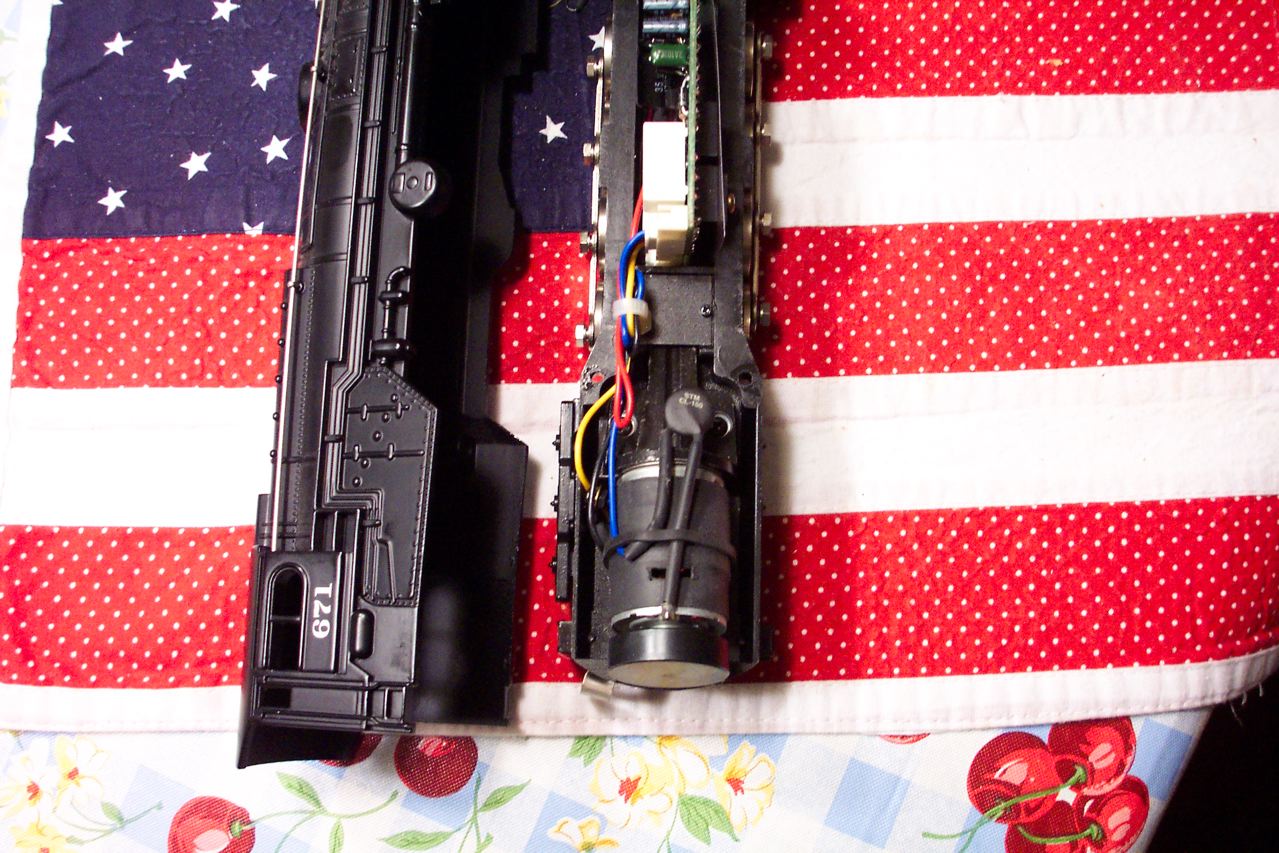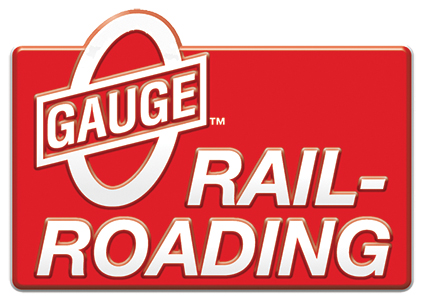Bought a new williams nw-2 from a dealer. Runs fine at about a scale 150 mph. No slow to it unless the voltage is almost off. There is an old post showing a fix to series wiring but is dated as the wiring is different. Anyone know of an update to the recent williams. I only paid $100 for this which has a list of $299 so maybe I got what I paid for, still if there is a way to slow it down I would be interested. There are 3 wires going to the motor, black, yellow and blue. I tried connecting the blues and then the yellows together but that produced no movement at all. Thanks for any help.
Replies sorted oldest to newest
wb47,
The man you want to talk to is Dale H, there is probably some electrical engineering that helps control the low end speed of these motors, wish I knew more about electrical engineering to help you. Try posting this thread in the electrical section.
PCRR/Dave
Series wiring between the motors; they come wired in parallel. This will help.
Starting with motor 'A' (either one; just a handy name), leave blue wire attached
to motor A and to board.vClip A's yellow wire.
Clip B's blue wire. Using wire nuts and some more wire (get some),
attach A yellow (from motor) to B blue (from motor). B's yellow will still be attached to board. The flow is now from board to A then from A to B, then from B back to board, completing the circuit - in "series". This will slow the motors down (same amperage, half the voltage per motor, or something like that; it will do the same work - power - but at a lower speed).
You will now have "extra" wires; using wire nuts, just cap them off to avoid
shorts. If you connect the "wrong" wires in this blue/yellow dance, you won't hurt
anything - one motor will run "backwards"; just reverse the connections.
Or look up "series wiring" on the Forum.
I installed a CruiseCommander with sound in my Williams GG-1. It's one of my most reliable smooth-running engines.
Jon ![]()
Series wiring between the motors; they come wired in parallel. This will help.
Starting with motor 'A' (either one; just a handy name), leave blue wire attached
to motor A and to board.vClip A's yellow wire.
Clip B's blue wire. Using wire nuts and some more wire (get some),
attach A yellow (from motor) to B blue (from motor). B's yellow will still be attached to board. The flow is now from board to A then from A to B, then from B back to board, completing the circuit - in "series". This will slow the motors down (same amperage, half the voltage per motor, or something like that; it will do the same work - power - but at a lower speed).
You will now have "extra" wires; using wire nuts, just cap them off to avoid
shorts. If you connect the "wrong" wires in this blue/yellow dance, you won't hurt
anything - one motor will run "backwards"; just reverse the connections.
Or look up "series wiring" on the Forum.
thanks D 500, but to clarify, you clipped two wires and only wired two together, leaving the others to go nowhere. Correct? Thanks
Here is a series wiring how-to that I put together when I did my E7...several years ago. The diagram was supplied by Bachmann.
http://s574.beta.photobucket.c...%20Wiring%20WBB%20E7
You can series wire the motors, and you can also add some diode drops if that's not enough.
If you don't want to series wire the motors you can buy a lower voltage transformer made by Troller Company, model tac 200. It has 0 to 9 volts and 0 to18 volt selections and whistle button, and works great with Williams engines.
Unless you balance the series motors voltage draw, there is the possibilty that one motor will run faster than the other motor and cause a motor to burn-out. In series circuit each motor can draw the voltage it demands, in parallel circuit each motor will only draw the same voltage and draw whatever watts it needs. You may not notice for a few months to two years and then one of your motors die without warning.
The above is one of the reasons that Williams won't honor the warrenty when series wiring is done. Also any attempt to change the circuit board voids the warrenty.
Lee Fritz
Series diode pairs in the motor leads are another way to tame the beast.
The downside to series wiring of dual-motored O gauge locomotives is that it can cause an "open differential" effect if traction becomes a problem. If one motor loses traction (say, on an incline, a curve, or a slippery section of track) and its wheels start spinning, the other motor will just stall instead of compensating for (helping) the loss of traction on the first motor/wheels; similar to a common automobile stuck in mud or ice where one wheel may spin helplessly while the other wheel remains still or hardly moves at all since torque is applied evenly to both wheels. And this is likely the main reason Williams doesn't wire it that way.
If there are no conditions on your layout that this would be a problem then maybe it's okay to do. Using diodes to drop down the current as gunrunnerjohn mentioned above would be my own recommendation.
Of course, if Williams simply just used lower gearing that would help tremendously as well. ![]()
Unless you balance the series motors voltage draw, there is the possibilty that one motor will run faster than the other motor and cause a motor to burn-out. In series circuit each motor can draw the voltage it demands, in parallel circuit each motor will only draw the same voltage and draw whatever watts it needs. You may not notice for a few months to two years and then one of your motors die without warning.
The above is one of the reasons that Williams won't honor the warrenty when series wiring is done. Also any attempt to change the circuit board voids the warrenty.
Lee Fritz
Well, it takes more than two years to kill them. I have several series wired Williams, K-line, and MTH locos that were done more than 10 years ago and they're still running just fine. No balancing done - no dead motors.
Well, it takes more than two years to kill them. I have several series wired Williams, K-line, and MTH locos that were done more than 10 years ago and they're still running just fine. No balancing done - no dead motors.
I agree, I haven't had a problem any problem like that although with me and its going on five years - although that does not represent that much running time because I was disappointed in the improvement. I've done it to two locos -- the rewiring is very easy to do, and I think, absolutely benign as to effects on durability, etc.. But I was underwhelmed by the results. Yes, it makes an improvement, but then there was a lot of room for improvement and it moved the loco only about halfway to where I hoped it would be. They are still a jackrabbit compared to some other brands, particularly Lionel in the last few years with their advertised feature of "Refined conventional transformer control with lower starting speeds."
Lee, that's hardly a fair comparison. You're comparing an inexpensive reverse unit to a much more sophisticated electronics package in the Lionel. The Williams just has a couple of relays that puts rectified track power right on the motors.
If Williams put that kind of logic in the engines, the prices wouldn't be as attractive as they are.
If you want the start to be slower, try a few back-to-back diodes in the motor leads.
I recently picked up another Williams NW2. Running them with my 1033 they start out reasonably slow but with my LW they are too fast. I plan to determine what value of current inrush limiter (thermistor) is best suited for two motored engines. I have them in my single motor steam engines and slow speed is around 3 MPH. Only slightly faster than an MTH PS2 engine running at 2 MPH.
As posted before here is what they look like in a Williams Turbine.

Pete
Lee, that's hardly a fair comparison. You're comparing an inexpensive reverse unit to a much more sophisticated electronics package in the Lionel. The Williams just has a couple of relays that puts rectified track power right on the motors.
If Williams put that kind of logic in the engines, the prices wouldn't be as attractive as they are.
If you want the start to be slower, try a few back-to-back diodes in the motor leads.
I don't think fairness has anything to do with it and I also think this is important information to share. Everyone should keep in mind that there is a 2:1 ratio in price and i imagine everyone does: if Bachmann/Williams locos are known for any overlal characteristic it is price and their bargain nature for a good basic loco.
But people set expectations based on what they have seen and anyone who has seen a Lionel diesel run in conventional slowly, or for that matter run the WBB Baldwin 10-wheeler slowly, might expect the rewiring trick to produce that level of slow smoothness, or something close to it. It won't go that far . . . . It significantly improves slow-speed running and it cuts jackrabbit starts, but in some sense you get what you pay for. Installing a good aftermarket electronics board that rivals the best available is about the only way I figure you could truely get to where they will creep along with Lionel diesels or that lovely little ten-wheeler.
The inrush current limiter costs less than a buck. It won't give you cruise but the engine will run as slow or slower than anyone's conventional engine. YMMV
BTW the link may not point to the one ideal for your engine.
Pete
Well, you can always consider command/control, it greatly enhances the low speed running, not to mention precise control all around the layout. ![]()


